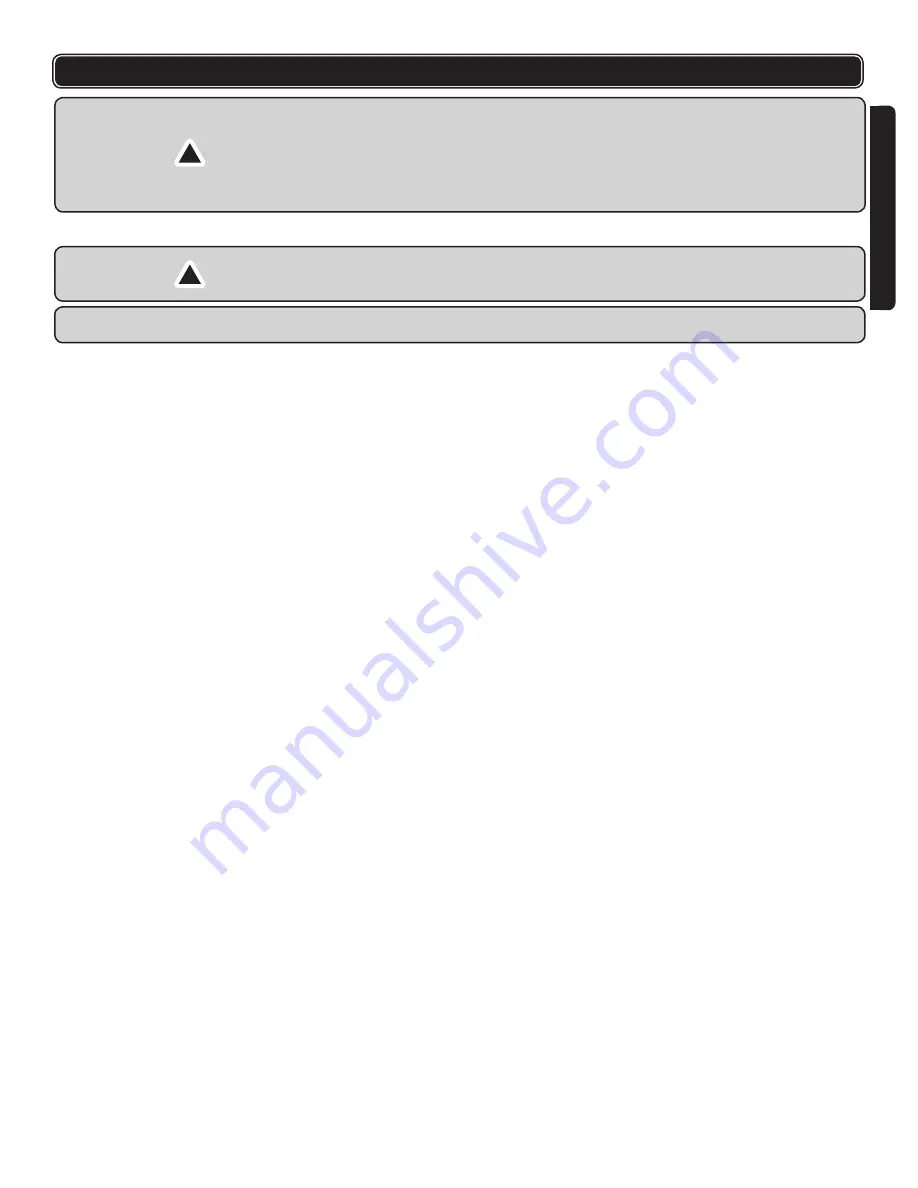
FRANÇAIS
ENGLISH
090107
5
WARNING:
Turn off your reciprocating saw at once, unplug and inspect it for
serious problems if:
Moving parts are stuck
Speed drops to and abnormally low level
The motor housing gets hot
Sparks or odours emit from the casing
TYPES OF CUTTING
WARNING:
Make sure the blade does not touch the workpiece until the saw
reaches its maximum speed set on the Variable Speed Dial. Failure to com-
ply could cause loss of control and result in serious injury.
NOTE:
Make sure that you do not hit any electrical wires, gas or water pipes.
Check the wall with a pipe/cable detector before you cut
GENERAL CUTTING
1. Hold your saw firmly in front and away from you, one hand gripping the rear
handle with the index finger on the trigger, the other hand supporting the
rubber forward hand grip from below.
2. Make sure the blade is clear of any surface and that the power cord is out of
the blade path.
3. Be sure the material to be cut is held firmly. Small pieces should be clamped
in place to a workbench.
4. Mark the line of cut clearly.
5. Adjust the variable speed dial to suit the material to be cut.
6. Pull the trigger switch.
7. Allow the saw to reach maximum speed.
8. Set the shoe against the workpiece.
9. Allow the blade to cut the material. Do not force it. Use only enough pres-
sure to keep the saw cutting.
10. The trigger lock-on button can be engaged while the trigger is depressed and
the saw runs without holding the trigger.
11. When finished, release the trigger or release the trigger lock-on button by
pulling the trigger once more.
PLUNGE CUTTING
1. Mark the line of cut.
2. Place the tip of the saw blade above the point where you intend to start, not
actually touching the surface; the saw resting on the bottom of the shoe, and
oriented parallel to the line of the cut.
3. Start the saw and run it up to full speed.
4. Slowly rock the saw forward on the shoe, tilting it and lowering the blade onto
the workpiece at the cut line. Make sure the blade does not touch the work-
piece until the saw is at maximum speed. If not, you could lose control and
serious injury could result.
5. Continue this tilting as the saw blade abrades a hole in the surface and the
saw is brought perpendicular to the surface.
METAL CUTTING
1. Use a sharp blade especially designed to cut the material you are working
with.
2. It is recommended you use a cutting fluid on the metal surface to avoid heat
build up.
3. When cutting metallic material with this tool, be sure to us a fine tooth blade.
4. To ensure safe operation, adjust the motor speed to a slower setting by ad-
justing the variable speed dial to the lower end of the speed range.
WOOD CUTTING
1. When cutting wood material with this tool, it is recommended to use a coarse
tooth blade.
2. To ensure maximum performance, adjust the variable speed dial to the upper
end of the speed range.
OPERATING PROCEDURES
!
!















